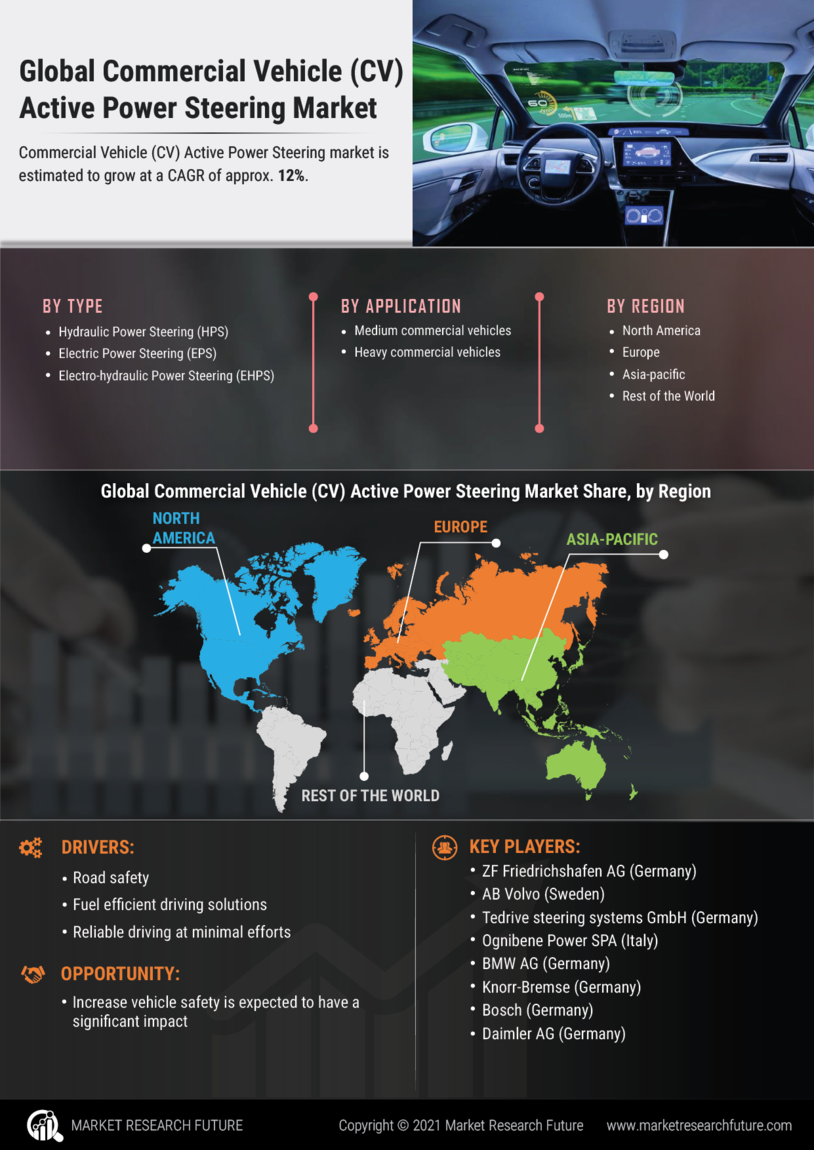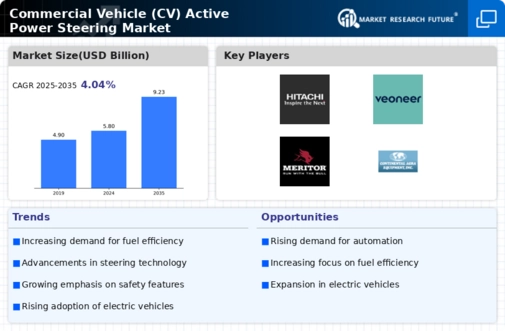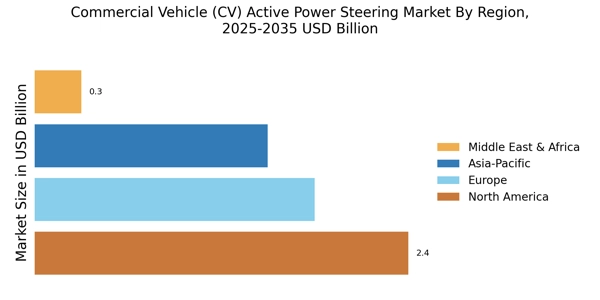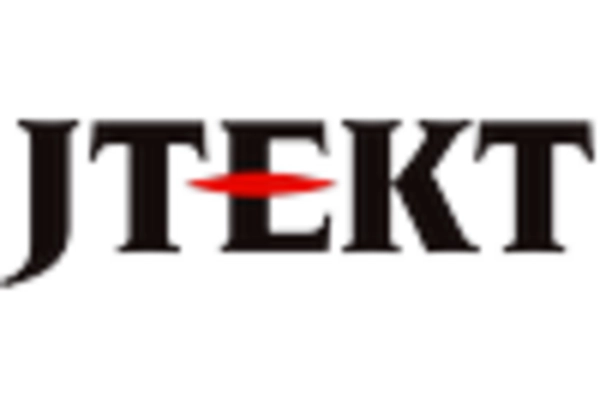Focus on Driver Safety and Comfort
The emphasis on driver safety and comfort is increasingly influencing the Commercial Vehicle (CV) Active Power Steering Market. With the rise in road traffic incidents, manufacturers are prioritizing the development of steering systems that enhance safety features. Active power steering systems contribute to improved vehicle control, reducing the likelihood of accidents. Furthermore, these systems are designed to minimize driver fatigue, which is essential for long-haul drivers. As safety regulations become more stringent, the demand for advanced steering technologies that comply with these standards is expected to rise. This focus on safety and comfort is likely to propel the market for active power steering systems in commercial vehicles.
Growth of E-commerce and Logistics Sector
The growth of the e-commerce and logistics sector is a significant driver for the Commercial Vehicle (CV) Active Power Steering Market. As online shopping continues to rise, the demand for efficient delivery systems has surged. This trend has led to an increase in the number of commercial vehicles required for logistics operations. In 2025, the logistics sector is expected to witness substantial growth, which will likely result in a higher demand for advanced steering technologies. Active power steering systems enhance the maneuverability of delivery vehicles, making them more efficient in urban environments. Consequently, the expansion of the e-commerce sector is anticipated to positively impact the market for active power steering systems in commercial vehicles.
Increasing Demand for Commercial Vehicles
The rising demand for commercial vehicles is a primary driver for the Commercial Vehicle (CV) Active Power Steering Market. As economies expand, the need for transportation of goods and services increases, leading to a higher production of commercial vehicles. In 2025, the commercial vehicle segment is projected to grow at a compound annual growth rate of approximately 4.5%. This growth is likely to be accompanied by a corresponding increase in the adoption of advanced steering technologies, including active power steering systems. These systems enhance maneuverability and driver comfort, making them attractive to manufacturers aiming to meet consumer expectations. Consequently, the demand for commercial vehicles directly influences the market dynamics of active power steering systems.
Technological Innovations in Steering Systems
Technological innovations play a crucial role in shaping the Commercial Vehicle (CV) Active Power Steering Market. The integration of electronic control systems and advanced sensors in active power steering enhances vehicle handling and safety. In recent years, manufacturers have invested significantly in research and development to improve steering responsiveness and reduce driver fatigue. The introduction of features such as lane-keeping assistance and adaptive steering further underscores the importance of technology in this market. As these innovations become more prevalent, they are expected to drive the adoption of active power steering systems in commercial vehicles, thereby expanding the market.
Environmental Regulations and Sustainability Initiatives
Environmental regulations and sustainability initiatives are increasingly shaping the Commercial Vehicle (CV) Active Power Steering Market. Governments worldwide are implementing stricter emissions standards, prompting manufacturers to adopt technologies that enhance fuel efficiency. Active power steering systems contribute to this goal by reducing energy consumption and improving overall vehicle efficiency. In 2025, it is anticipated that the market for eco-friendly commercial vehicles will expand, leading to a higher demand for advanced steering technologies. This trend indicates a shift towards sustainable practices in the automotive industry, which is likely to drive the adoption of active power steering systems in commercial vehicles.


















Leave a Comment